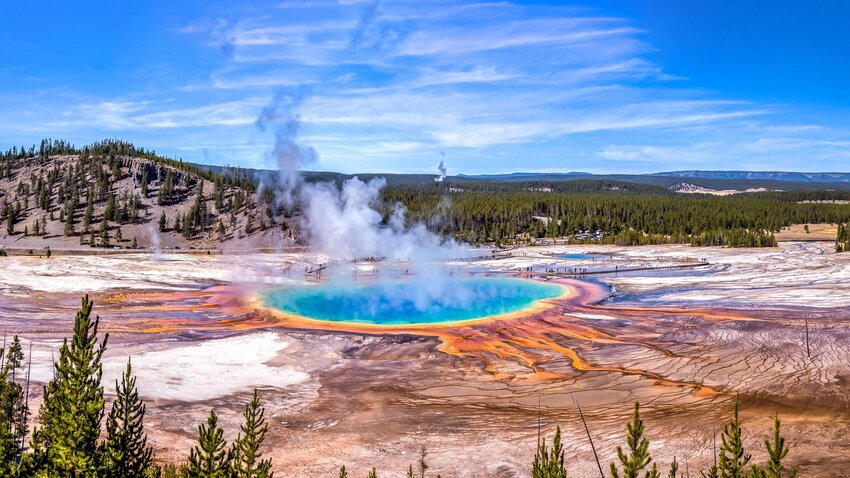Being awed by American landscapes is practically second nature for both visitors and inhabitants of this country, thanks to the glaciers, volcanoes, and shifting tectonic plates that created these natural wonders. Nationally recognized parks — like Arches National Park or Petrified Forest National Park — are signifiers of spaces that are so remarkable they need additional preservation from the National Park Service.
Every state has natural wonders, whether its residents are used to them or not. While natural wonder exists in every space, here are the state-by-state locations we find to be additionally special in their organic formation and in above-average beauty.
Alabama: Cathedral Caverns

When soluble limestone dissolves, it forms karst, or solutional caves, one of the most common naturally forming types of underground spaces. If we needed any reminders of what an incredible world we live in, look to caves like Alabama’s Cathedral Caverns. Awesome, globally recognized features exist here, including the world’s largest stalagmite (the kind that rises from the floor), “waterfalls” of flowstone, and a “mystery river” seemingly without a source. It’s the kind of cave that has to be experienced to be believed. Not only do visits include cave tours (that may tell you about the people who once called the caves home), but you’ll also be treated to some actual gemstone mining.
Alaska: Denali

Rising 20,310 feet above sea level, Denali’s peak is the highest mountain in the entirety of North America. From afar, this mountain and its surrounding range seem to glow, the icy, glacier-covered sides glistening in the sunlight. Alaskan landscapes are naturally stunning, and visitors come to the park mostly during the summer for carriage rides and history tours as well as outdoor adventures like biking, hiking, and rock climbing. To experience the true wonder of this landscape, take a sled dog ride. Denali National Park is also the only American park with a kennel of sled dogs, which is pure delight — especially if it’s puppy season.
Arizona: The Grand Canyon

Huge thanks to the Colorado River and its millions of years of work to create this classic American landmark. The Grand Canyon to American natural wonders is a bit like NYC is to American cities, hugely popular and one of the first that comes to mind, and for good reason. The canyon is breathtaking — as in, it’ll literally leave you gasping for air as you try to conceptualize a crater 277 miles long and over a mile deep. It’s a popular road trip spot, the perfect place to gaze for hours, and has some of the best river-rafting in the continental U.S. And when you’re done all of that, be sure to visit Monument Valley and its Mitten buttes or to Antelope Canyon for a tour through the slot canyons.
Arkansas: Mystic Caverns and Crystal Dome

What is it about caves that brings forward that sense of unbelievable mysticism? It’s hard not to walk through the sister caves in Arkansas without feeling that supernatural forces must have been at work to create this enormous and otherworldly structure. The walls ripple with centuries of erosion, the ceiling is a continuous chandelier of stalactites known as soda straws, and the Crystal Dome glistens like it’s made of actual gemstones. The state park leads tours through the two caves, which are the perfect place to learn about cave pearls and pipe organs and an even better way to connect with the raw power of nature.
California: Redwood Forest National and State Park
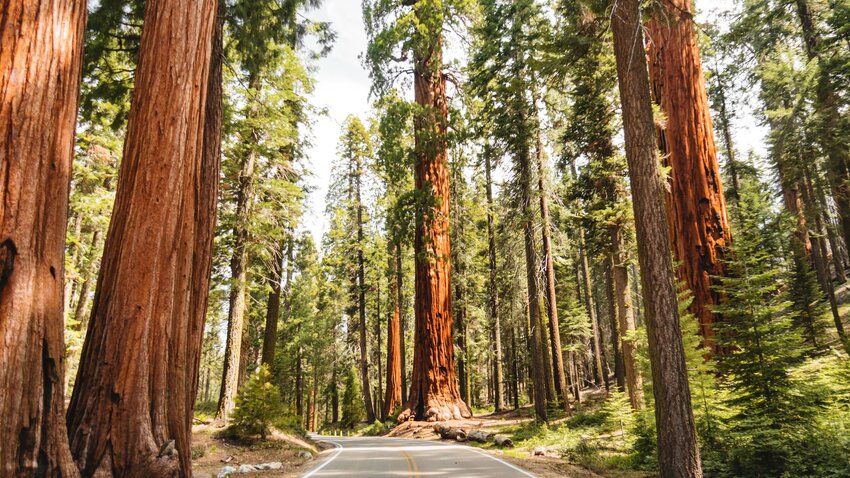
Geology isn’t the only impressive natural creation in the United States, although California is full of fabulous land structures like Yosemite National Park. Redwood National Park is home to one of the oldest, most massive tree systems on Earth. Coast Redwoods live an average of 500-700 years, but several have been found to be over 2,000 years old, making these silent giants some of the oldest living beings. Walking among tangible history is an impressive way to remind yourself how little time we occupy on the earth, and to realize how much time these trees have seen. Take scenic drives, camp, and hike in the light that filters down through the thick trunks.
Colorado: Garden of the Gods
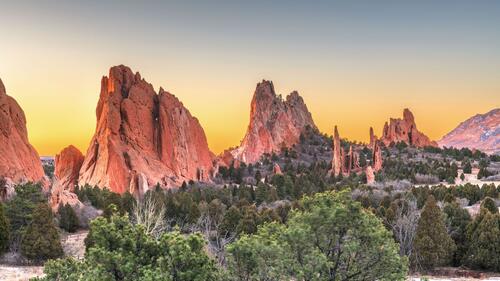
Sometimes a space is so majestic that the surveyors deem it fit for the Gods themselves (after first thinking it could be an excellent place for a biergarten). The remnants of weathered mountains, buried under their own sediment, stand in craggy, unsteady looking formations. The effect is quite impressive, especially when the sun turns the stone into glowing orange turrets against the darkening sky. For the free climbers and boulderers of the world, these golden surfaces are irresistible, and for those who like their feet a little closer to the ground, the hiking, horseback riding, and camping is a bit of heaven fit for deities.
Connecticut: Thimble Islands

We owe quite a bit of our natural wonders to the glaciers that shaped our shorelines, curved out mountains, and carved our lakes. The Thimble Islands off the coast of Connecticut were once the tops of small mountains, smoothed down to an arrayed archipelago by the crushing power of historic glaciers. These small islands have been sought by the rich and famous who built homes and summer cottages on the pristine coves and pink granite outcroppings. If boating, rock finding, swimming, and sunbathing aren’t enough, then perhaps you’ll be enticed by the tangible natural history of the region. And if nothing else intrigues, this may be your chance to find Captain Kidd’s treasure.
Delaware: Coastal Salt Marshes

Nature’s systems are well-oiled machines (occasionally disrupted by human activity), and salt marshes are one of the most interesting. These coastal ecosystems are regularly flooded by salty tides, and the plants and animals have evolved to withstand such a difficult environment. If you’ve not yet felt appreciative for anything today, take a minute to be grateful for nature’s biology and its ability to adapt to the harshest conditions. Delaware’s tidal wetlands defend against coastal erosion — a phenomenon that could carve states like Delaware into the ocean — and trap harmful levels of carbon in a useful chemical process known as carbon sequestration. Take a canoe or a kayak through these intricate ecosystems to be a little closer to the natural operations — and wonders — of our country.
Florida: Everglades National Park

We feel a distinct sense of awe seeing strange and never-before-experienced geological structures, but national parks exist not only to protect the land itself but also the creatures and animals that depend on it. The Florida Everglades are a rich tapestry of biodiversity, including 36 threatened and protected species, the largest mangrove ecosystem in the Western Hemisphere, and unique ecotones of fresh and saltwater species that occupy Biscayne National Park and the Everglades. Not only can visitors feel the presence of these animals and plant systems stretching for miles, they can also see wildlife up close from hiking and biking paths, go slough slogging (where feet are likely to get wet, but manatee sightings are second to none), and take boats out for salt and freshwater sports fishing.
Georgia: Providence Canyon

If you’re an explorer after every version of your state’s seven wonders and you hail from Georgia then Providence Canyon is squarely on that list. While this canyon is technically evidence of human influence on the land — the massive gullies were caused by poor farming practices in the 1800s — it’s also unmistakable in its natural beauty. The multicolor soil, while fragile, bleeds into the layers beneath it, reds into oranges, oranges into purples, all offset by the deep green springing up between the rounded shoulders of the canyon. You’ll get the impression that the entire space was painted as you hike around the rim and into the deepest canyon to join the Canyon Climbers Club.
Hawaii: Waimea Canyon

Anyone who’s been to, seen pictures of, or lives in Hawaii can attest to the constant displays of natural wonder on these tropical islands. Striking natural landscapes abound, from the lava fields on the Big Island to rippling peaks covered in lush greenery from these ancient eruptions. Sitting at the top of the charts, however, is Waimea Canyon. Formed by centuries of erosion and volcanic activity, Kauai’s majestic landscape is a conglomeration of red craters, waterfalls, and caches of vegetation. It’s unmistakably unique, both in its size (10 miles and 3,000 feet deep), and for the distinct geological history that formed the land itself.
Idaho: Craters of the Moon

Need even more evidence that the United States contains otherworldly scenes? Visit Idaho’s Craters of the Moon National Monument and Preserve to feel like you’re stepping into outer space. The Craters of the Moon Lava Fields stretch for 618 square miles; you can walk on thin paths between shiny, black stones and atop the crests of ash-colored soil that slowly morphs into rolling green foothills. Explore the lava tubes themselves in the Cave Area, hike to the top of Inferno Cone, or pitch a tent to get that never-before-felt experience of watching the sun rise on another planet.
Illinois: Pomona Natural Bridge

Who says natural wonders need to be larger than life? Illinois’ Natural Land Bridge is a bit of a secret, if only because people tend to overlook it. Within the Shawnee National Forest is a 30-foot-high, 8-foot-wide, and 90-foot-long bridge formed by nature herself. While this is the perfect length hike for children, they’re not the only ones who’ll get excited by the structure. After all, how often does one get to walk over a stone path quite literally fabricated by the elements?
Indiana: Seven Pillars of Peru (The Cliffs)

Traverse the Frances Slocum Trail running along the Mississinewa River and you may miss the natural wonder you’re standing on top of. The Pillars — centuries of eroded limestone that carved out alcoves in the side of the river, with rounded sections seeming to hold up the forest floor — rise 50 feet above the water, offering spectacular waterfront vistas. This space is sacred to the Miami Nation of Indians, an area that was once a trading post and the site of important council meetings. It’s easy to see why, as the land itself seems to have chosen this riverside wall to create a kind of underground palace.
Iowa: Loess Hills

When the sun, low on the horizon, casts its rays on the Loess Hills, the grasses, trees, and sand-duned earth light up. The last ice age is responsible for these beauties, when the finely ground rock and debris, crushed under miles of ice, flooded into the Missouri River Valley. The dune fields, made of loess — or ‘sugar clay’ — were rooted in their rigid formation by the eventual arrival of grasses. Now, visiting the narrow ridges is tranquil, the height of the formations providing stunning displays of the surrounding floodplain. Other than Shaanxi, China, this is the largest loess deposit in the entire world. You may find yourself content to gaze for hours at the rippling fabric of the land.
Kansas: Monument Rocks

Once upon a time, the Western Interior Seaway split what is now North America into two landmasses. The land shifted, but the remnants of this ocean remained in landscapes across America, and are particularly apparent in Kansas. Fossils and carbonate deposits laid down during this period created what we now call the Chalk Pyramids — 70-foot structures in arches and buttes. They rise out of the flat land as monuments that cast long shadows across the dusty ground. Visitors marvel at their shape and texture, and once they’ve seen their fill often journey to the similarly impressive Mushroom Rock State Park, Castle Rock, and Rock City.
Kentucky: Mammoth Cave

The longest and most expansive cave system in the world lives in Kentucky, protected by Mammoth Cave National Park. These caves are gargantuan, both in height — the Bottomless Pit is 105 feet deep, Mammoth dome is 192 feet high — and in length; so far over 420 miles have been discovered. Need help wrapping your head around that one? It would take you 7 hours in your car traveling 60 mph to traverse the length of these caves. Cave tours take you through the history of the caverns, which were used by the earliest known pre-settler Americans, and the natural geography of these sprawling, massive earthly channels.
Louisiana: Atchafalaya Basin
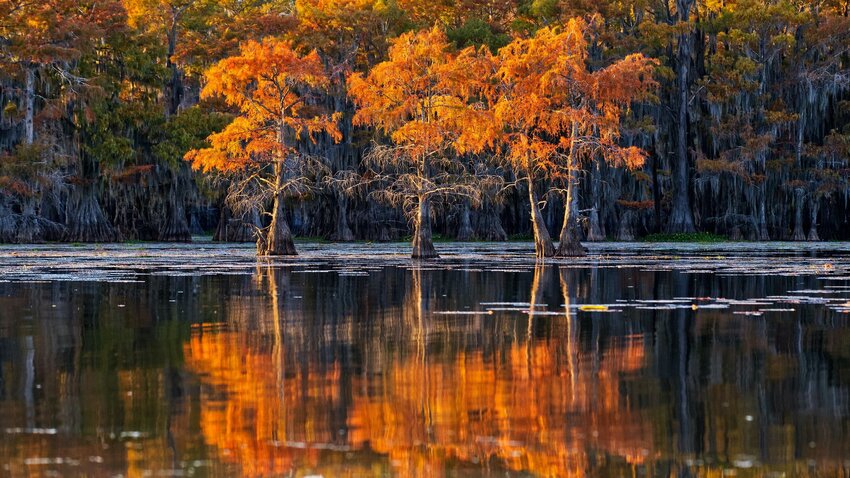
The largest wetland in the United States covers over 2,200 square miles of Louisiana and is home to hundreds of species of reptiles, mammals, and birds. True wilderness is difficult to find in the United States, but the Atchafalaya Basin may just be one of the last remaining landscapes where visitors are completely entrenched in pure nature. While highways, levees, and other man-made structures exist around the Basin, the inner waterways are a natural maze. If you take a tour in the Basin with the Nature Study Project, you’re in for a day (or more) of tranquility, bird watching, and awe of the biospheres that have formed in and around this watery paradise.
Maine: Old Sow Whirlpool
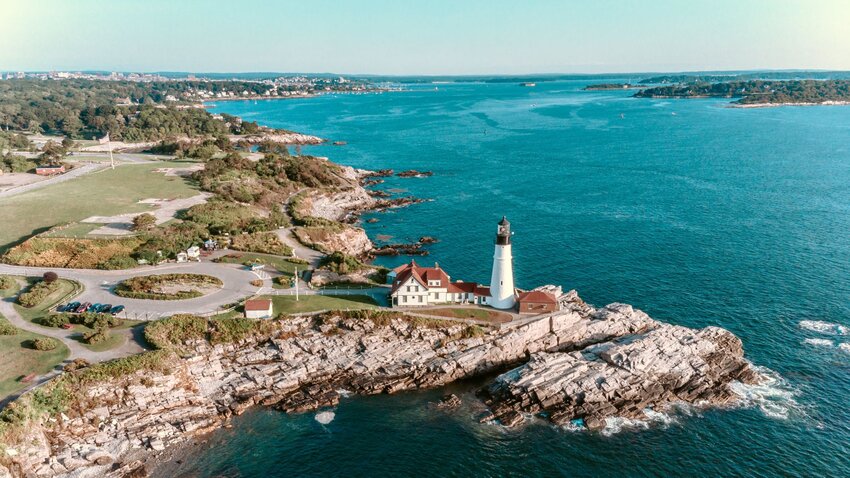
The deep, unfathomable ocean and its mysteries mostly keep to themselves, except in some rare circumstances. Old Sow Whirlpool is the largest in the Western Hemisphere and has been known to produce standing waves and water spouts. What causes such forces of nature? This whirlpool marks the place where Passamaquoddy Bay and the Bay of Fundy trade water, but is also likely created by local currents and ocean floor topographic features. Once visitors have seen the sunrise from Cadillac Mountain in Acadia National Park (where the sun first touches the U.S.), and taken a spin through the Desert of Maine, Old Sow calls — just keep an eye out for her smaller but no less splashing piglets.
Maryland: Blackwater National Wildlife Refuge
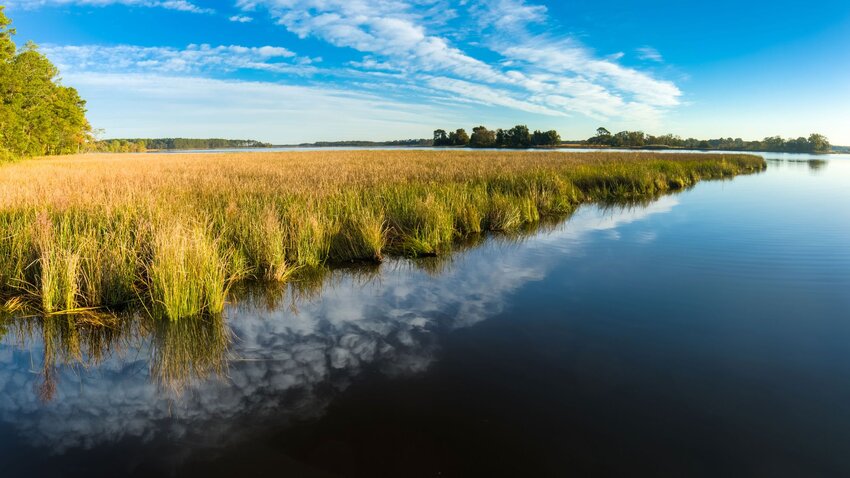
When humans head to beaches and warmer weather, we have highways, airline channels, and railroads built expressly for our travel. But what if we had to navigate ourselves? For one of nature’s most stunning displays, take a trip to Maryland’s Blackwater National Wildlife Refuge, where more than 50,000 migratory birds stop on their biologically ordained flights along the critical migration route known as the Atlantic Flyway. Visitors have miles to watch bald eagles, flying squirrels, and many endangered species and appreciate the forces of nature all around them.
Massachusetts: Aquinnah Cliffs
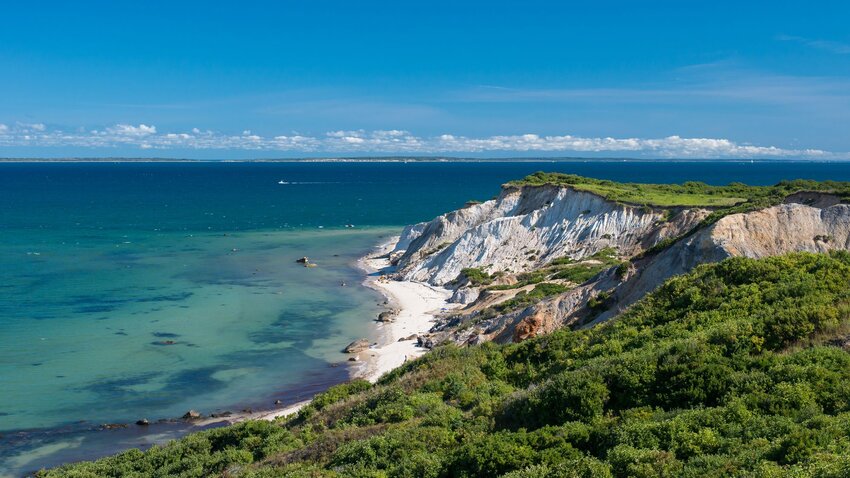
We know why hundreds flock to Martha’s Vineyard every year, and it’s not just because of the lighthouses and fairy-tale cottages. This island oozes relaxation and wonder, from the bikeable trails to the seaside views, and none is more impressive than the glacially carved Aquinnah Cliffs. These clay and sandstone cliffs are an array of color, swirls of deep reds, purples, oranges, and yellows that stand dramatically against the oceanfront sky. It’s not just another place to visit in your Martha’s Vineyard vacation, it’s one of Massachusetts' most gorgeous scenes.
Michigan: Pictured Rocks National Lakeshore

Minerals? In rocks? Groundbreaking. Michigan’s Upper Peninsula attracts visitors with its wild, lush, and practically untouched forests and beachfront views, and also with its actual groundbreaking wonders. One of Michigan’s most memorable spaces are the northern cliffs of this peninsula, made of 500-million-year-old material. The cliffs look ancient, weathered and streaked with color from iron, manganese, limonite, and copper. They rise up to 200 feet above the deepest turquoise water and stretch for 15 miles. Once visitors have looked their fill at this geological wonder, there’s also biking, hiking, fishing, and beaches to enjoy.
Minnesota: Niagara Cave

Imagine Niagara Falls but underground. The passageways of Minnesota’s 200-feet-deep caves are carved limestone, the passageways rippling around you as you move towards the falls. Worn away by eons of erosion and the underground river, visiting this cave is completely immersive. You’ll feel like part of nature itself as you listen to the river and waterfall pounding against the rocks below and feel the damp spray settling on your hair and skin. The caves may be darker than its above-ground waterfall namesake, but you’ll find yourself leaning into your other senses in this tranquil, below-ground piece of irreplaceable nature.
Mississippi: Red Bluff

If you’re obsessed with the color of the natural world, take a visit to Mississippi’s Little Grand Canyon. A trip to Red Bluff promises to be completely unique as erosion continues to shift and shape the landscape, meaning that your views over the red craters and peaks may never look that way again. The colorful sediments are stunning, and the warm color of the sand wouldn’t look out of place in a desert, or on Mars.
Missouri: Elephant Rocks

1.4 billion years ago, magma formed mineral-filled rocks that were then cooled, split, and weathered by groundwater before being exposed to the air. From there, once the miles of strata above them eroded away, these glacial erratics were swept along and placed, end to end, in the Saint Francois Mountains in Missouri. They look like a line of circus elephants, their rounded, folded surfaces rising high above the heads of hikers arriving from the Braille Trail. It’s never a bad idea to spend time with creatures that never forget, whether they’re real or made of stone.
Montana: Grinnell Glacier

George Bird Grinnell was one of the first American conservationists to advocate for the remaining glaciers. His namesake is shrinking, steadily, with the human-made effects on the planet, but for the moment it still flows within Glacier National Park. Glaciers are historical treasures; these giant entities are formed over hundreds of years and move steadily over the earth, shaping it into the beautiful scenes we’re accustomed to today. Grinnell Glacier is a must visit on your trip to Glacier National Park, but as you drive the Going-To-The-Sun road and hike to Iceberg Lake, don’t forget to think about how your steps impact the earth and its wonders.
Nebraska: Ashfall Fossil Beds
It’s incredibly rare to see more than bits and pieces of our world’s history, especially those that haven’t been collected and maintained by humans. But the Ashfall Fossil Beds offer something that very few fossil sites can manage. When a Yellowstone eruption spread ash across Nebraska, the bodies of the living creatures were frozen, intact, into fossilized bone beds. Now, visitors can see the lagerstätten in person, almost as if they were visiting the site 12 million years ago.
Nevada: Valley of Fire

A day trip from Las Vegas will take visitors straight into the Valley of Fire, a landscape with rising red rock formations made of Aztec sandstone, arched stones, petroglyphs from early residents, and panoramas of pink- and red-striped canyons. You’ll be amazed at how closely the swirling rocks look like lava, the ripples and curves appearing molten when the sun strikes them. If your definition of natural wonder requires a space unlike anything else you’ve ever seen, the Valley of Fire is landscape after landscape of the unbelievable. Don’t forget to keep an eye out for the formations that resemble elephants and beehives.
New Hampshire: Lakes of the Clouds

Mountaintop lakes are remarkable things, calling to mind the fairy pools and misty moors across Ireland and Scotland. The Lakes of the Clouds in the White Mountains, between Mount Monroe and Mount Washington, has a similar, mystical feeling. The mountaintop vegetation is low to the ground, meaning that the lakes are completely free from shadows, reflecting only the movement of clouds that seem to touch the water. Lakes at the crest of mountains are known as tarns, and form when glaciers carve out the land as they move over the tops of peaks. This particular tarn is popular with hikers and for a unique experience, they can even stay at the Lakes of the Clouds Hut, Appalachian Mountain Club’s highest destination.
New Jersey: Palisades Cliffs

Towering up to 540 feet above the Hudson River are toothed cliffs, a sheer rock face that’s served as protection and defense — creating the name we know today. These basalt cliffs are more than 200 million years old, formed when magma cooled and remained standing as the dirt and softer rock around them eroded. These classic cliffs have been on European maps since explorers’ arrival in the New World, and played an important role throughout the Revolutionary War. Since humans have lived in the area, the broad belt of cliffside has attracted sightseers with its stunning views.
New Mexico: White Sands National Park

These white “sand” dunes made of crystallized gypsum are the largest of their kind in the world. The park is an expanse of white flowing sediment, organized in wind-shaped patterns. Back when the land was a lush basin of grassland and lakes, ice age mammals populated the valley. Now, 12,000 years later, many of the animals that live in the dunes have adapted to the coloration. Visitors can camp among the crystal-white dunes, hike, or even sled down the massive sand-hills, all while keeping an eye out for white sand lizards or the adorable pocket mouse.
New York: Niagara Falls
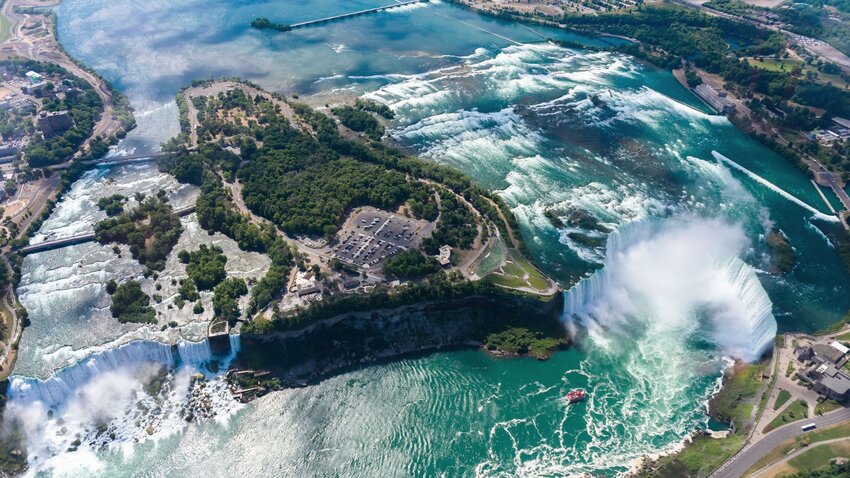
Horseshoe falls connects Canada to the New York border, perhaps the most recognizable waterfall making up Niagara Falls. These enormous cascades are simply unfathomable unless you’re up close — something you can do on a Maid of the Mist tour — when 6 million cubic feet of water gushing over the lip of the cliff every minute is right before you. Hike along the falls, take a river-rapids cruise, and prepare yourself to get wet from the spray of the more than 160-foot drop.
North Carolina: Looking Glass Rock

The Blue Ridge Parkway is a hiker's dream. Rolling mountains in every direction, widespread forests, and a few particularly interesting outcroppings. The plutonic monolith known as Looking Glass Rock rises from the Appalachian Mountains and draws attention and view-seekers, but the true natural wonder occurs when rainwater freezes over the granite face. The natural mirror glistens when the light hits it and reflects the sun and sky. Even when it’s not acting as looking glass, the bulge of rock stands out from the rest of the surrounding landscape, a noticeable feature among the distant mountains.
North Dakota: Cannonball Concretions

Mountaineers might be used to rocks of every shape and size, but for many of us, stones are not naturally perfectly round — the compacted and condensed sedimentary material forms early. Many years later, the rocks emerge as geological curiosities in spheres and rounded shapes. The Cannonball Concretions in North Dakota aren’t the only concretions in the world, but they are a part of the wonder of Theodore Roosevelt National Park. Visitors can spend time in the space our former president adventured, watch baby bison play, and visit these odd spherical wonders that still attract much attention and awe.
Ohio: Crystal King and the Ohio Caverns

When an ancient underground river flowed underneath Ohio’s rolling hills, not only did it create miles of passageways, it formed the perfect conditions for crystal formation. Crystals don’t just happen, they form unbelievably slowly; a crystal stalagtite, for example, can take anywhere from 500 to 1,000 years to grow a single inch. This is what makes Crystal King in the Ohio Caverns so impressive. The over 5-foot long Crystal King stalactite is over 200,000 years old, and likely weighs over 400 pounds. The rest of the caves are a palace of rooms that open into displays of rarely forming iron-oxide and calcium crystal formations.
Oklahoma: Great Salt Plains

Oklahoma’s Great Salt Plains stretch for 11,000 acres, the evaporated remnants of an inland sea. The white, flat land shimmers in the heat, and a saline aquifer replenishes the sediment and contributes to the Great Salt Plains Lake, where catfish, sand bass, and other shallow-water fish thrive. Feel the salt crunch under your feet as you cross the plains, and maybe even bring home a souvenir. This is the only place in the world where you can dig for hourglass selenite, a fragile form of gypsum.
Oregon: Crater Lake
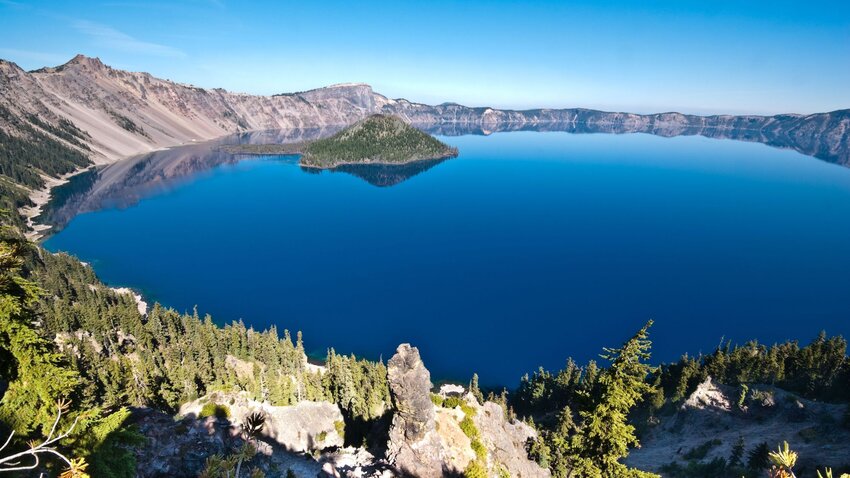
The deepest lake in the United States is, not so coincidentally, one of the coldest. Oregon’s Crater Lake averages 38 degrees fahrenheit during the year, so while swimming in the deep blue waters may look inviting, visitors may want to bring their fluffiest towels after they emerge. This ancient volcanic caldera erupted thousands of years ago and left behind a rim of jagged rocks, several small volcanic islands, and a natural beauty that pulls in visitors who can hike, bike, fish, and explore the areas around the crater.
Pennsylvania: Ringing Rocks
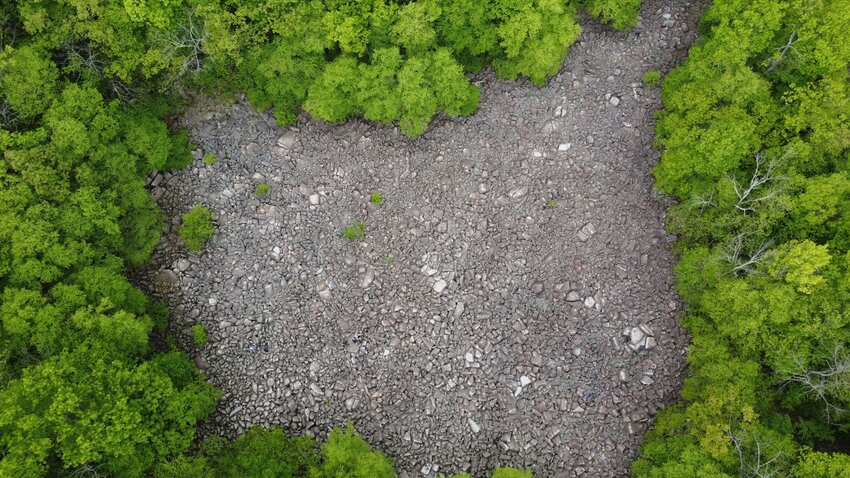
In middle Pennsylvania is a field of unassuming rocks. To understand what’s going on beneath the surface, you’ll need your hammer. When struck, the stones sing, a feature that continues to mystify geologists and rock enthusiasts, though most can agree that these stones-turned-musical instruments have a chemical makeup unlike any other. Take your time through these boulders, and see if you can find the ones that no longer ring — another mystery of theses intriguing stones.
Rhode Island: Block Island

About 12 miles off the coast of Rhode Island sits an island shaped and molded by retreating glaciers, leaving rounded lakes and heaps of stones. The land has been home to people for several centuries (some suggest even longer), and was critical in early American conflicts. While almost 50% of the land is now protected and maintained by the Block Island Nature Conservancy, visitors can still see the remnants of human touch, including the miles of crisscrossing stone walls made from glacial erratics that early farmers created when the land was primarily used for crops. The bluffs overlook lighthouses, beaches, and rocky shorelines, and the Nature Conservancy takes visitors through the spaces that protect life across the island.
South Carolina: 40 Acre Rock
Hike along the gently sloping gravel trail between old growth trees in the 40 Acre Rock Heritage Preserve and you’ll soon be stepping out onto a sheet of rock that stretches for, well, acres. While the rock itself isn’t 40 acres wide, it is large enough to make visitors pause to consider the amount of stone beneath them. The granite is covered in depressions, making the space eerily moon-like. The best time to visit is after it rains, when the indented spaces become miniature pools overflowing with tiny organisms. Once you’ve surveyed the views from the back of this monster boulder, there are caves and hidden rock formations to explore.
South Dakota: Badlands National Park
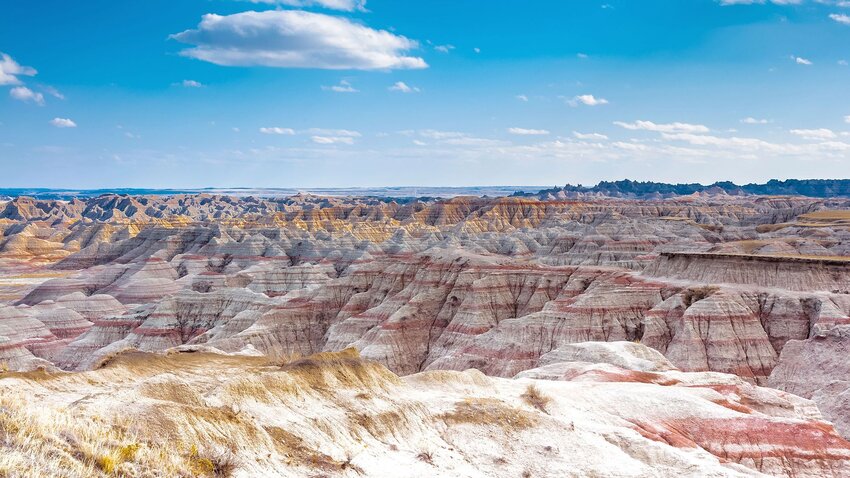
You’ll see the buttes and pinnacles that make up the Badlands from quite a distance. The flat prairie drops away, revealing an optical illusion of striped rock and sediment rippling slightly over the pillars smoothed by wind and rain. For over 11,000 years, this land has been integral to the people living on it. There are fossil digs that unearth creatures from the Eocene and Oligocine periods, hikes through the patterned hills, and campsites in the midsts of these dry, earthy surroundings — just watch out for the rainstorms that can sometimes sweep away tents.
Tennessee: Craighead Caverns

If you were to dig 144 feet below Sweetwater Tennessee, you wouldn’t find more rock and earth, but an elaborate cave system home to The Lost Sea. After a meandering tour through the history and beauty of the caves themselves — which were used as meeting spaces by the Cherokee, mines by Confederate soldiers, and a hideout for moonshiners during prohibition — visitors step out into an enormous cavern filled with illuminated blue water. This underground lake is the largest in the United States, the water still and slightly eerie, but undeniably amazing. Rainbow trout swarm around the boat that takes visitors deep into the middle of the lake, and the lights around the space allow clear views nearly to the bottom — up to 70 feet deep.
Texas: Hamilton Pool Preserve
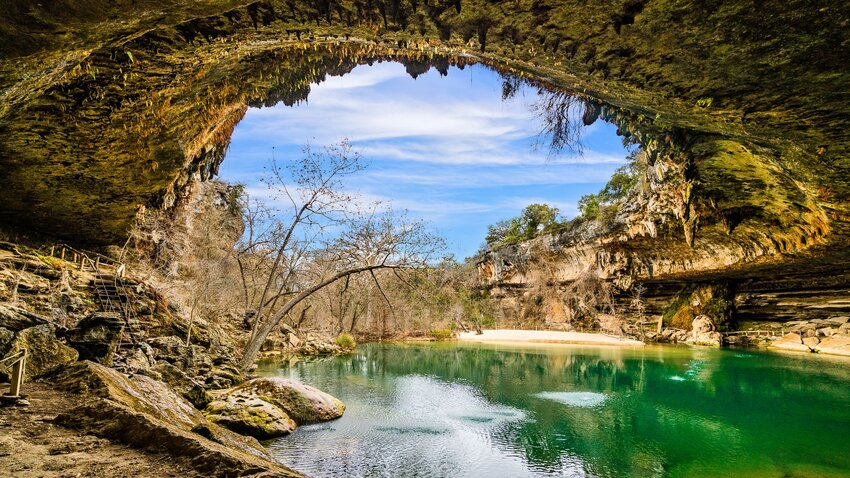
A waterfall cascades over a horseshoe lip, splashing down into the large pool below. This is the pool preserve in Hamilton River, a reservation-required paradise formed naturally by the collapse of an underground river’s dome. The result is an exposed jade-blue swimming hole, falling water that swimmers sit under, and sloping rock walls under the cliff overhang. The grotto’s walls and cliffs are covered in moss and hanging ferns, and cliff swallows swoop in and out of dark crevices, giving the preserve a fairy-land feel. Float in the water, slide down the slippery rocks, and enjoy a quiet slice of Texas nature.
Utah: Zion Canyon
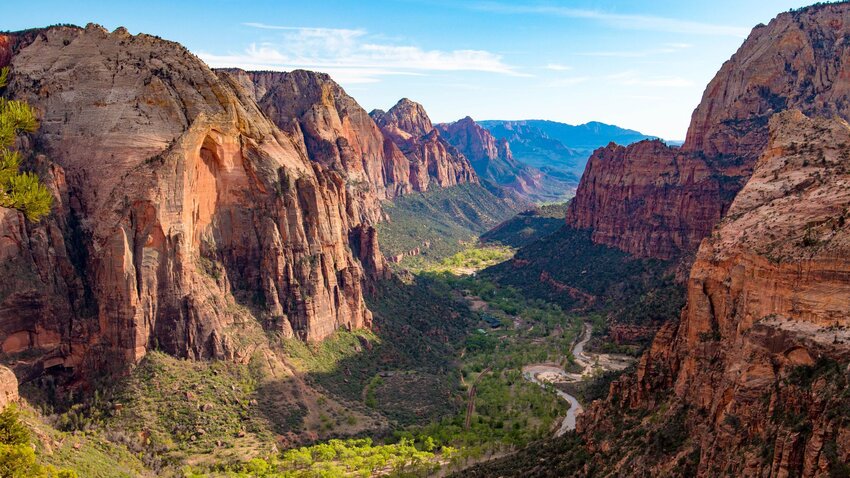
Utah’s enormous, naturally sculpted valley sits at the intersection of three dramatic biospheres, the Colorado Plateau, the Great Basin, and the Mojave Desert. Protected by Zion National Park, the over 60 species of animals that thrive in these diverse climates are frequent company on the hiking trails and mountaintop overlooks. When you’re done clambering over rocks just like the bighorn sheep around you, visits to Zion Canyon involve gazing out over the multicolor walls, driving along the Zion Canyon Scenic Drive or the Zion-Mount Carmel Highway, or hiking beside the Emerald Pools and Weeping Rock. And, when you’re done there, take a spin under the Rainbow Bridge National Monument for a little extra dose of awe.
Vermont: The Green Mountains

Vermont isn’t the only state that displays unbelievable colors in autumn, but it is the state that does it best. The rounded Green Mountains turn slowly when the season changes, the golds and reds creeping upwards in elevation and bleeding into the evergreen conifers that cap the summits. Hiking through this natural process in the Green Mountain National Forest is a bit like walking through a fireworks display (without the noise). Once you reach the summit of Camel’s Hump, Mount Abraham, or Mount Mansfield, the state is laid out beneath you in a symphony of color. With the second smallest population of any state, Vermont’s Green Mountains in the fall are an escape into the natural beauty that persists in the world — and when you’re through looking, grab a beer at one of the many breweries that dot the state.
Virginia: The Great Channels
Large, moss-covered boulders rise far above heads and create passageways across 20 acres of the Channels Natural Area Preserve. 400 million years ago, the stone was shaped and split, forming a maze of boulders carved by glaciers and weathered by wind and rain. It’s a bit like western American slot canyons, but the trees growing between the stone passageways and the rough surfaces have a distinctly East Coast atmosphere. Hike between the stones, climb to the top, squeeze through the smallest openings, and wander through the sunlight streaming through cracks in the walls.
Washington: The Enchantments

Stumbling upon a scene unlike any other he’d witnessed before and with alpine lakes glistening as they reflected the tree-bark cliffs above them, Albert Hale Sylvester named the area after his awe. Enchanting is the best way to describe this collection of jagged peaks and smoothed basins. Rock climbers and hikers flock to this area to scale Dragontail Peak and to visit the lakes named for mythological figures. For the pictures alone, The Enchantments deliver the kind of respect reserved for spiritual experiences, or just surreally beautiful landscapes.
West Virginia: Dolly Sods Wilderness Area

We can all agree that the most dramatic natural wonders seem to occur when the earth is at its extremes, and the high elevation of the Dolly Sods Wilderness Area is no exception. While visitors and residents of northern Canada might be more familiar with the high plateau landscape, Dolly Sods is a bit like an island in the middle of West Virginia’s typical nature. Nearly 50 miles of hiking trails cut through wildflower fields with alpine views frequently heavy with fog, which are also frequented by bears, deer, and other animals comfortable with the colder climate.
Wisconsin: Cave Of The Mounds
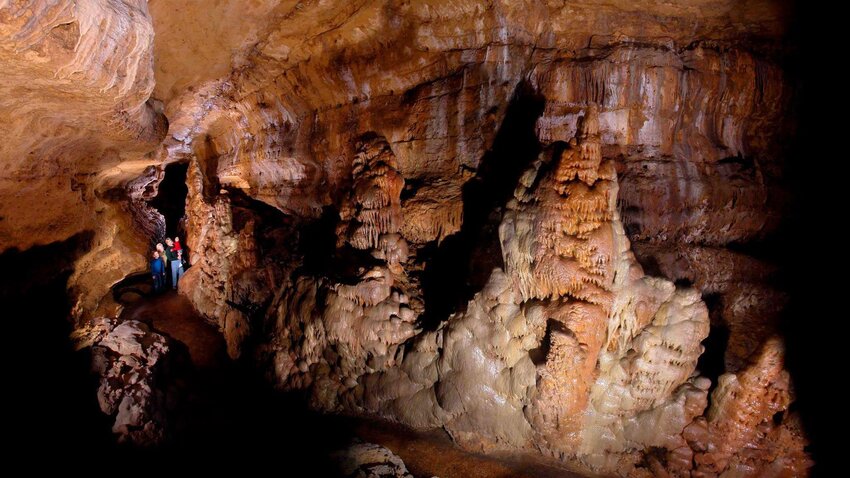
Known as the ‘jewel box’ of American caves, this Wisconsin landmark is filled with its own kind of treasure. Formed nearly two million years ago, the Cave Of The Mounds has its own pearls — known as oolites — gravity-defying helictites, and other perfectly formed geological features. The minerals in the stone color the walls deep reds and oranges, rippling over rock formations and drawing your attention wherever you look. Once you’ve concluded your tour through the cave, you can add to your own jewelry box by cracking open a geode or two.
Wyoming: Yellowstone National Park
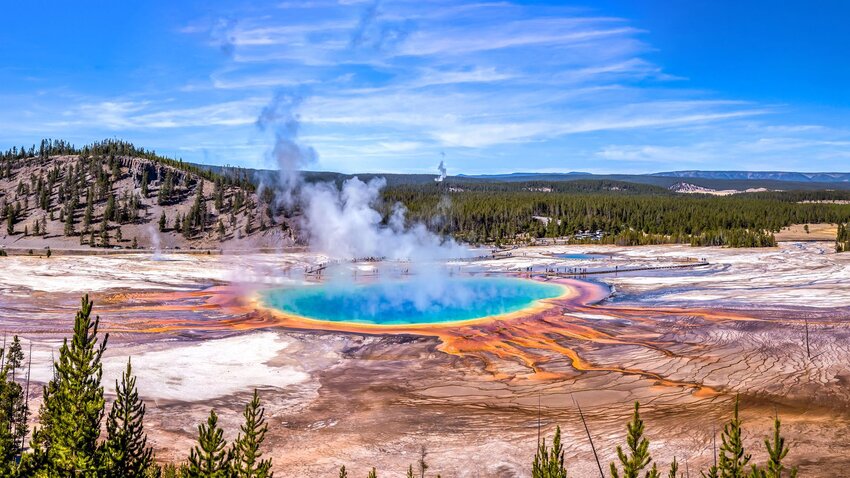
Volcanic eruptions get a lot of attention as natural disasters that have enormous power over human construction and existence — after all, lava chasers aren’t exactly new. At Yellowstone, it’s easy to have appreciation for this somehow-normal caldera phenomenon (that’s still distinctly mind-boggling when you think about miles of molten rock deep beneath your feet). The park itself bridges three U.S. states, encompasses gorges, lakes, rivers, mountain ranges, and natural geysers. Whether you want to traipse across the geyser fields and squeeze in a visit to Old Faithful, see the brilliant colors of the Grand Prismatic Spring, or climb the sediment built-up that is Mammoth Hot Springs, Yellowstone isn’t shy about showing you scenes far beyond human imagination.

